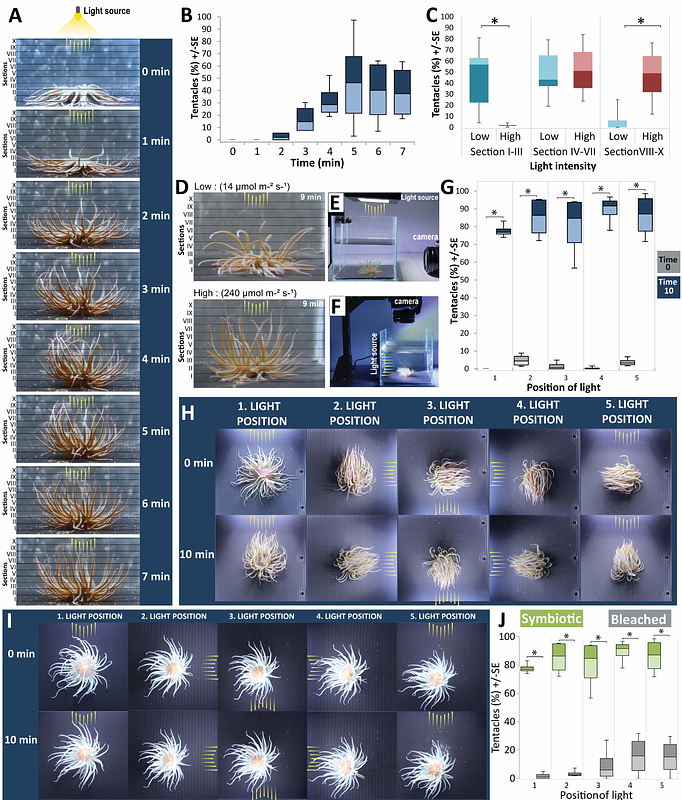Plant-like heliotropism in a photosymbiotic animal

Plant-like heliotropism in a photosymbiotic animal
Lintnerova, E.; Shaw, C.; Keys, M.; Brownlee, C.; Modepalli, V.
AbstractBeing photosynthetic sessile organisms, plants established heliotropism to track the sun\'s position across the sky and allow their vegetative parts to orient accordingly. Here, we report plant-like heliotropic movement in a photosymbiotic sea anemone Anemonia viridis. Like plants, photosynthesis represents a key energy source in endosymbiotic cnidarians bearing microalgae. We observed that A. viridis in their natural habitats under sunlight displayed heliotropism or solar tracking by pointing their tentacles towards the sun while remaining sessile, facing east at dawn and west at dusk as they track the sun\'s relative position through the day, a phenomenon previously only observed in plants. Solar tracking movements in A. viridis are driven by a light wavelength that prompts photosynthesis in their endosymbionts. The heliotropic response was absent in both bleached (aposymbiotic) A. viridis and in symbiotic A. viridis with chemically inhibited photosynthesis. We revealed a direct correlation between heliotropism and endosymbiont oxygen production in A. viridis. Our findings suggest that photosymbiotic A. viridis has likely evolved plant-like heliotropism as an effective way to modulate exposure to solar irradiation for photosynthesis. The study exemplifies how photosynthetic organisms such as plants and photosymbiotic sea anemones, display similar behaviour in response to similar environmental pressures.